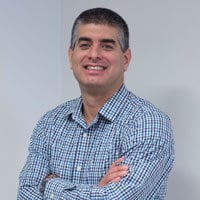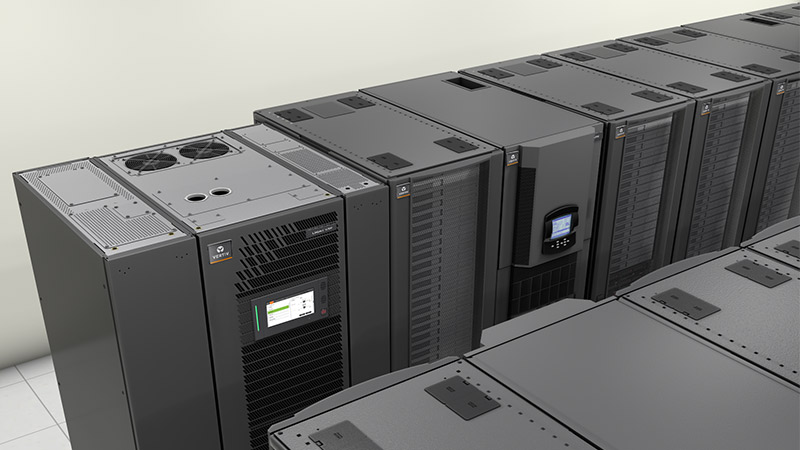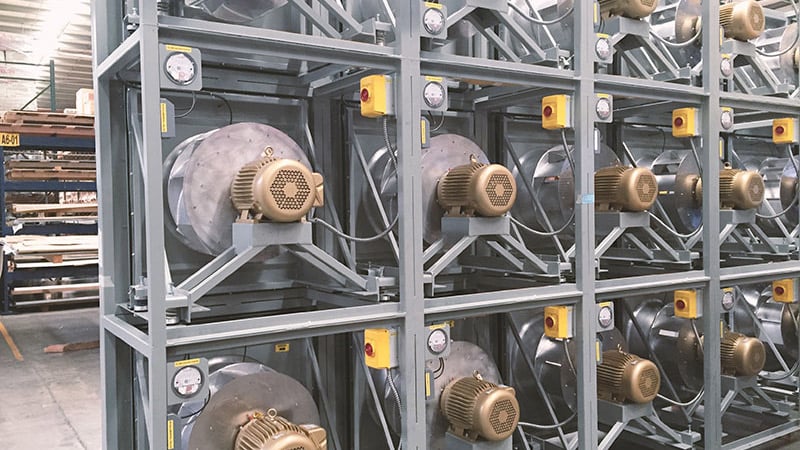Chile is a country historically wealthy in water resources, with an average of 55,640 cubic meters per person per year, according to the United Nations Environmental Group in Chile. Despite this, the country has some areas in which this indicator reaches only 1,169 cubic meters per person per year, a number below the acceptable limits for sustainable development. This megadrought has forced the country to generate significant water rationing in the last decade.
In addition to presenting a planning challenge for the authorities, this situation creates new challenges in the design, construction, and optimization of data centers, specifically regarding cooling systems.
Thermal management remains a critical infrastructure priority. Data center-level cooling systems are more important than ever. Systems are handling an increasingly dense load given the rising heat generated by ever-denser computing systems, which are needed to support today's data-intensive applications such as the Internet of Things (IoT) and Artificial Intelligence (AI).
There are multiple options for cooling data centers, depending on the heat load to be cooled, energy costs, available water, and density, among other considerations. Popular options on the market range from zero-water refrigerant-based Direct Expansion (DX) systems, to water-intensive evaporative systems. While the use of water enables excellent energy efficiency, DX systems can also achieve high energy-efficiency without taxing local water resources.
In an environment of water scarcity, the main question that data center operators must ask themselves is: what cooling technology should I use for the next 10-15 years?
To effectively answer this question, operators must consider both energy and water availability, and strike the right balance between the two. In areas of water scarcity, that may mean using water-free DX systems, while in other areas water -and energy- efficient-free cooling chillers with an adiabatic pad system may prove to be the best solution.
The Long-Term Strategy
In this context, an interesting conversation is generated between data center operators and Vertiv about their vision for the future.
Operators who focus on their initial investment and do not include risk variables or operating cost usually opt for technologies that reduce cost in the short-term only. However, for planned growth and optimized design, there are a range of technologies that can equip an operation with the ability to grow capacity. These technologies are relevant at both the CAPEX and the OPEX level, allowing the operator to consider the Total Cost of Ownership (TCO). TCO calculations are almost always more efficient if projected over time.
Moving to lithium-ion batteries is a prime example of thinking with a long-term energy-efficient strategy. Because of their chemistries, lithium-ion batteries typically require less maintenance and have a higher power density than Valve Regulated Lead Acid (VRLA) batteries historically used in Uninterruptible Power Supply (UPS) systems used to support critical electronics in data centers. They are also calculated to last 2 to 3 times longer than VRLA batteries, reducing the need for replacement and labor costs.
Although the initial cost of lithium-ion batteries is higher than lead-acid batteries, their inherent benefits typically offer a lower TCO in a period of 5 years. In a comparison of a 1500VA UPS with either lithium-ion or VRLA batteries, the lithium-ion UPS offers up to 40% or more of savings in 6-8 years.
Energy efficiency is a factor that greatly influences this long-term strategy. One success story that reflects this comes from Santiago, Chile, where one of the largest IT providers in Latin America set the goal of achieving a PUE of 1.08 for its second data center. For this project, Vertiv had a team of mechanical and electrical engineers working with the data center operator.
In addition to reducing electricity costs, the operator aimed to reduce its carbon footprint. To achieve this, Vertiv recommended and deployed three cooling technologies: adiabatic, free-cooling, and mechanical cooling. By using mixed solutions, the equipment pre-cools the air, takes advantage of ambient humidity, and balances the temperature of the cabinets, as it enhances the hours of uniform and programmed operation.
With highly available and energy-efficient heavy-duty cooling equipment, designed to work 24/7, the operator saw energy savings up to 40%. In addition, the new energy-efficient cooling and power backup infrastructure allowed the operator to achieve Tier IV Certification from the Uptime Institute. With this accomplishment, the operator gains a competitive advantage in the market, being the second data center that exists in Chile with this type of certification.
Taking a lesson learned from this implementation, planning begins with the location. As demand grows, Chilean data centers must learn to make the most of the advantages provided by the country’s environment, such as low temperature and humidity ideal for energy-efficient technologies. And planning must be based on its vulnerabilities, such as the availability and cost of water.
According to the General Directorate of Water, by 2030 the demand for water will increase by 5% and by 2040 by 10%, a condition that would worsen the water crisis. Naturally, the increase in demand can bring with it a rise in the rates of this public service.
Many operators are already analyzing new, attractive regions of the Chilean geography as they consider locations for their data centers beyond the metropolitan area. Technologies that increase the efficiency, power, and capacity for future growth will be key for a more successful migration to new locations. Working with a local infrastructure expert with a broad portfolio and deep knowledge of the region is a good way to develop this strategy.






